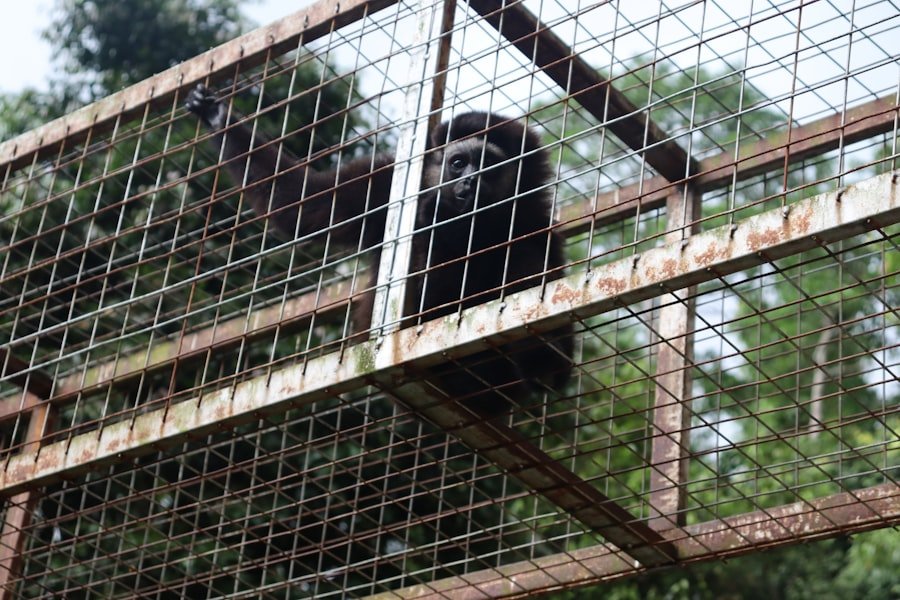Costochondritis is an inflammatory condition that affects the cartilage connecting the ribs to the breastbone, known as the sternum. This inflammation can lead to localized pain in the chest area, which may mimic the symptoms of more serious conditions such as heart disease or pulmonary issues. The condition is often benign and self-limiting, but it can cause significant discomfort and anxiety for those experiencing it.
Costochondritis is most commonly seen in adults, particularly those between the ages of 20 and 40, although it can occur at any age. The exact cause of costochondritis is often elusive, and in many cases, it may arise without any identifiable trigger. However, it is generally characterized by tenderness and pain in the costosternal, costochondral, or costovertebral joints.
The pain can be exacerbated by certain movements, deep breathing, or physical activity, leading to a decrease in quality of life for those affected. Understanding this condition is crucial for effective management and treatment.
Key Takeaways
- Costochondritis is an inflammation of the cartilage that connects a rib to the breastbone.
- Common causes of costochondritis include injury, physical strain, and certain medical conditions like arthritis.
- Symptoms of costochondritis include chest pain, tenderness, and discomfort when breathing or coughing.
- Costochondritis can be identified through physical examination, medical history, and imaging tests like X-rays or MRI.
- Understanding the pain locations of costochondritis is important, as it typically occurs in the chest area and can mimic heart-related conditions.
Common Causes of Costochondritis
Several factors can contribute to the development of costochondritis. One of the most common causes is repetitive trauma or overuse of the chest muscles, which can occur in individuals who engage in activities that involve heavy lifting or strenuous exercise. For instance, weightlifters or athletes who perform repetitive upper body movements may be at a higher risk for developing this condition due to the strain placed on the ribcage.
In addition to physical activity, infections can also lead to costochondritis. Viral infections, particularly those that affect the respiratory system, may cause inflammation in the cartilage. Conditions such as fibromyalgia and ankylosing spondylitis have also been associated with costochondritis, suggesting that underlying systemic issues may play a role in its onset.
Furthermore, trauma from accidents or falls can directly impact the ribcage and lead to inflammation of the costal cartilage.
Symptoms of Costochondritis

The hallmark symptom of costochondritis is chest pain, which can vary in intensity from mild discomfort to severe pain. This pain is typically localized to the area where the ribs meet the sternum and may be sharp or aching in nature. Patients often report that the pain worsens with certain movements, such as twisting the torso or taking deep breaths.
Coughing or sneezing can also exacerbate the discomfort, making it challenging for individuals to engage in normal activities.
In some cases, individuals may experience additional symptoms such as swelling or tenderness in the affected area. While costochondritis does not usually present with systemic symptoms like fever or chills, the pain can lead to significant emotional distress and anxiety, particularly if individuals fear that their symptoms may indicate a more serious health issue.
Understanding these symptoms is essential for both patients and healthcare providers to differentiate costochondritis from other potential causes of chest pain.
How to Identify Costochondritis
Identifying costochondritis typically involves a thorough clinical evaluation by a healthcare professional. The process begins with a detailed medical history and a physical examination focused on the chest area. During the examination, a physician will palpate the costosternal and costochondral joints to assess for tenderness and pain response.
This localized tenderness is a key indicator of costochondritis and helps distinguish it from other conditions that may cause chest pain.
In addition to physical examination findings, healthcare providers may also consider the patient’s activity level and any recent injuries or illnesses that could contribute to their symptoms. A careful review of these factors can provide valuable insights into the likelihood of costochondritis as a diagnosis.
While imaging studies such as X-rays or MRIs are not typically required for diagnosis, they may be utilized if there is suspicion of other underlying conditions that could be causing similar symptoms.
Understanding the Pain Locations of Costochondritis
The pain associated with costochondritis is primarily localized to specific areas of the chest where the ribs connect to the sternum. This includes the costosternal joints at the front of the ribcage and the costochondral junctions where the ribs meet their respective cartilages. Patients often describe this pain as sharp or aching and may find it difficult to pinpoint its exact location due to its diffuse nature.
Interestingly, while most individuals experience pain in the upper chest area, some may also report discomfort radiating to other regions such as the back or abdomen. This referred pain can sometimes lead to confusion regarding the diagnosis, as it may mimic symptoms associated with cardiac issues or gastrointestinal problems. Understanding these pain locations is crucial for both patients and healthcare providers in order to accurately assess and manage this condition.
Diagnosing Costochondritis

The diagnosis of costochondritis is primarily clinical and relies on a combination of patient history, physical examination findings, and exclusion of other potential causes of chest pain. As previously mentioned, tenderness upon palpation of the costosternal or costochondral joints is a key diagnostic criterion. In many cases, if a patient presents with characteristic symptoms and localized tenderness without any alarming signs such as fever or significant respiratory distress, a healthcare provider may confidently diagnose costochondritis.
However, if there are atypical features present—such as severe pain that does not respond to typical treatments or associated systemic symptoms—further investigation may be warranted. This could include imaging studies like X-rays to rule out fractures or tumors, or blood tests to check for signs of infection or inflammatory conditions. Ultimately, a thorough diagnostic approach ensures that other serious conditions are not overlooked while confirming a diagnosis of costochondritis.
Treatment Options for Costochondritis
Treatment for costochondritis typically focuses on alleviating pain and reducing inflammation. Nonsteroidal anti-inflammatory drugs (NSAIDs) such as ibuprofen or naproxen are commonly recommended as first-line treatments due to their effectiveness in managing pain and inflammation. These medications can help provide relief for individuals suffering from acute episodes of costochondritis.
In addition to pharmacological interventions, physical therapy may also play a significant role in treatment. A physical therapist can design a tailored exercise program aimed at strengthening the muscles around the ribcage and improving flexibility. This approach not only helps alleviate current symptoms but also reduces the risk of recurrence by addressing any underlying muscular imbalances or weaknesses.
In more severe cases where conservative measures fail to provide relief, corticosteroid injections into the affected area may be considered as an option for reducing inflammation.
Lifestyle Changes to Manage Costochondritis
Incorporating lifestyle changes can significantly aid in managing costochondritis and preventing flare-ups. One important aspect is modifying physical activity levels; individuals should avoid activities that exacerbate their symptoms while gradually introducing low-impact exercises that promote overall fitness without straining the chest area. Activities such as walking, swimming, or cycling can be beneficial while minimizing stress on the ribcage.
Additionally, practicing good posture is essential for individuals with costochondritis. Poor posture can place undue stress on the chest muscles and joints, potentially worsening symptoms. Ergonomic adjustments at workstations and mindful awareness of body alignment during daily activities can help alleviate pressure on affected areas.
Furthermore, incorporating relaxation techniques such as yoga or meditation may assist in managing stress levels, which can contribute to muscle tension and exacerbate pain.
When to Seek Medical Attention for Costochondritis
While costochondritis is generally considered a benign condition, there are circumstances under which individuals should seek medical attention promptly. If chest pain is accompanied by symptoms such as shortness of breath, dizziness, or radiating pain into the arms or jaw—especially if these symptoms are sudden or severe—immediate medical evaluation is warranted to rule out serious conditions like heart attacks or pulmonary embolisms. Additionally, if an individual experiences persistent or worsening symptoms despite conservative management strategies over several weeks, it is advisable to consult a healthcare provider for further evaluation.
This could indicate that an alternative diagnosis should be considered or that more aggressive treatment options may be necessary.
Complications of Untreated Costochondritis
Untreated costochondritis can lead to several complications that may affect an individual’s quality of life. Chronic pain resulting from ongoing inflammation can result in limitations in physical activity and decreased participation in daily tasks or hobbies. Over time, this can lead to muscle weakness due to disuse and further exacerbate postural issues.
Moreover, persistent discomfort may contribute to psychological effects such as anxiety or depression related to chronic pain syndromes. Individuals may find themselves avoiding social situations or physical activities due to fear of exacerbating their symptoms, leading to isolation and decreased overall well-being. Addressing costochondritis early on through appropriate treatment strategies can help mitigate these potential complications.
Preventing Recurrence of Costochondritis
Preventing recurrence of costochondritis involves a multifaceted approach that includes both lifestyle modifications and awareness of risk factors. Individuals who have experienced episodes of costochondritis should pay close attention to their body mechanics during physical activities and avoid movements that place excessive strain on their chest area. Engaging in regular strength training exercises focused on core stability can also help support proper posture and reduce stress on the ribcage.
Additionally, maintaining a healthy weight through balanced nutrition and regular exercise can minimize strain on joints throughout the body, including those in the chest region. Individuals should also consider incorporating stretching routines into their daily regimen to enhance flexibility and reduce muscle tension around the ribcage. By adopting these preventive measures and remaining vigilant about their physical health, individuals can significantly reduce their risk of experiencing recurrent episodes of costochondritis.
If you are struggling with chronic pain, you may find some helpful coping tips in the article 5 Positive Coping Tips for Patients with Chronic Pain. Managing conditions like Costochondritis can be challenging, but with the right strategies, you can improve your quality of life. It’s also important to stay informed about other related conditions, such as Dead Arm Syndrome, which you can learn more about in the article Understanding Dead Arm Syndrome: Symptoms, Causes, and Treatment.
FAQs
What is costochondritis?
Costochondritis is a condition that causes inflammation of the cartilage that connects a rib to the breastbone (sternum). It typically causes chest pain, which can be sharp and may worsen with movement or deep breathing.
What are the causes of costochondritis?
The exact cause of costochondritis is often unknown, but it can be triggered by physical strain, injury, infection, or inflammation in the rib cage area. It can also be associated with conditions such as arthritis, fibromyalgia, or respiratory infections.
What are the symptoms of costochondritis?
The main symptom of costochondritis is chest pain, which may be sharp or dull and is typically located on the left side of the breastbone. The pain may worsen with movement, deep breathing, or coughing. Some people may also experience swelling or tenderness in the affected area.
Where is the pain located in costochondritis?
The pain associated with costochondritis is typically located on the left side of the breastbone, but it can also occur on the right side or on both sides. The pain may radiate to the back or abdomen in some cases.
How is costochondritis diagnosed?
Costochondritis is usually diagnosed based on a physical examination and a review of the patient’s medical history. Imaging tests such as X-rays or MRI scans may be ordered to rule out other potential causes of chest pain.
What are the treatment options for costochondritis?
Treatment for costochondritis usually involves managing the symptoms with rest, over-the-counter pain medications, and applying heat or ice to the affected area. In some cases, a doctor may prescribe physical therapy or corticosteroid injections to reduce inflammation and pain.

